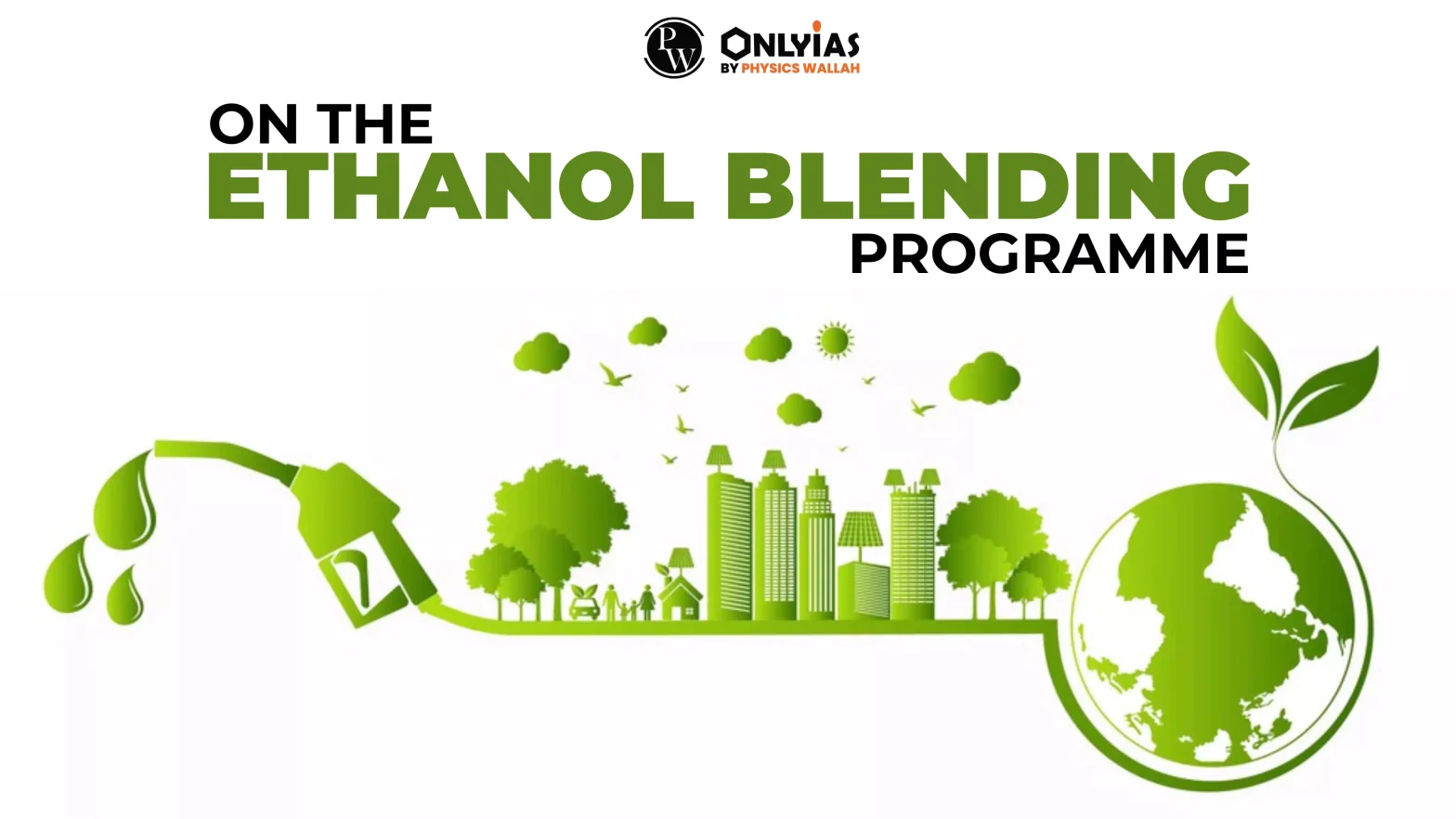India is on track to achieve its ambitious target of blending 20% ethanol with petrol by 2025-26, as indicated by recent progress in blending percentages and increasing ethanol production capacities. However, the journey toward this goal is fraught with challenges, particularly concerning the “food versus fuel” debate. Recent developments, such as the surge in maize imports and restrictions on sugarcane-based ethanol, highlight the complexities of balancing energy needs with food security.
| Why Adding Ethanol is a Strategic Advantage?
Ethanol’s lower emissions and higher efficiency make it a more sustainable fuel alternative, reducing the need for petroleum imports from West Asian countries. This shift not only contributes to a cleaner environment but also strengthens India’s economic resilience by positively impacting foreign reserves. |
The Blending Target: Current Status and Projections
- India’s ethanol blending program aims to integrate 20% ethanol with petrol by 2025-26, translating to a production target of approximately 1,000 crore litres of ethanol.
- As of now, blending levels have risen from around 8% in 2021 to 13-15% in 2023.
- This progress highlights the significant strides made in scaling up ethanol production and integration into the fuel supply chain.
Enroll now for UPSC Online Course
The Food vs. Fuel Dilemma
The “Food vs. Fuel” dilemma in ethanol blending centres on the impact of using food crops like maize and sugarcane for ethanol production, potentially straining food supplies. As India ramps up ethanol blending, balancing the demand for fuel with maintaining food security and managing agricultural resources becomes increasingly complex.
Thus, there is a need to ensure that ethanol production does not come at the expense of food security. |
Type of Biofuels
First-Generation Biofuel
- Has high carbon content.
- Made from edible items, e.g., sugar, corn, starch, etc.
Second-Generation Biofuel
- Has a lower greenhouse gas content compared to first-generation biofuel.
- Made from leftovers of food crops, e.g., rice husk, wood chips, etc.
Third-Generation Biofuel
- Is carbon neutral (CO₂ emitted = CO₂ sequestered).
- Produced using microorganisms, e.g., algae.
Fourth-Generation Biofuel
- Made from genetically engineered crops.
- They are carbon negative.
Note: Currently, all the emphasis is on first-generation (1G) ethanol, which is directly made from food grains and sugarcane. The government should diversify and move towards second-generation (2G) and third-generation (3G) ethanol, which have a more benign impact on food security. |
Government Policies and Industry Dynamics
- The NITI Aayog roadmap outlines a significant increase in both sugarcane-based and grain-based distilleries to meet the ethanol blending targets.
- Specifically, sugarcane-based distilleries need to expand from 426 crore litres in 2021 to 760 crore litres by 2026, while grain-based distilleries must grow from 258 to 740 crore litres.
- The government’s interest subvention programs have been crucial in facilitating this expansion, but there is a call for their extension to sustain momentum and ensure long-term stability.
Check Out UPSC CSE Books From PW Store
The Sugarcane Dilemma
Sugarcane produces three main products: sugarcane juice and syrup, B-heavy molasses, and C-heavy molasses, in decreasing order of sugar content. Typically, the first two are used to make sugar, while the third is used for ethanol production.
- To boost fuel ethanol production, the government began permitting the diversion of the first two away from sugar production towards fuel ethanol. However, this diversion has led to concerns about the impact on sugar availability.
- The government’s recent restrictions on the diversion of B-heavy molasses and sugarcane juice highlight the delicate balance needed between ethanol production and sugar supply.
- Expanding sugarcane cultivation to meet ethanol demands further exacerbates water use concerns, with potential impacts on agricultural sustainability.
- To make up for the shortfall caused by restrictions on B-heavy molasses, grain-based distilleries, primarily using maize, have likely been operating at full capacity to maintain blending percentages.This has led to a shortfall in the availability of maize as well aevident by increased Maize imports this year.
Increased Maize Imports: A Red Flag?
- Recent data reveals a notable increase in maize imports from April to June of this year compared to the previous year.
- This rise in imports is largely attributed to the increased use of maize for ethanol production, compensating for restrictions on using sugarcane products.
- While the industry maintains that India has ample grain and sugar surpluses, the spike in imports raises concerns about potential imbalances in the food supply chain.
Fuel Efficiency in Automobiles
- Ethanol blending not only reduces greenhouse gas emissions but also has the potential to save foreign exchange and support rural economies.
- However, there are concerns about the impact of higher ethanol content on vehicle performance.
- Existing vehicles may experience a decrease in fuel efficiency by an average of 6% when using ethanol blends, raising questions about the feasibility of achieving the E20 compliance target without affecting vehicle performance.
Enroll now for UPSC Online Classes
| Note: Uttar Pradesh is leading the country not only in sugar and sugarcane production but also in ethanol production. |
Conclusion
India’s ethanol blending program represents a significant step towards sustainable energy use and reduced greenhouse gas emissions. However, achieving the 20% blending target requires careful management of the food versus fuel dilemma, the adoption of advanced biofuels, and continued policy support for ethanol production infrastructure. A balanced approach that considers food security, environmental impact, and vehicle performance will be crucial in realising the full potential of this ambitious program.
![]() 21 Aug 2024
21 Aug 2024

